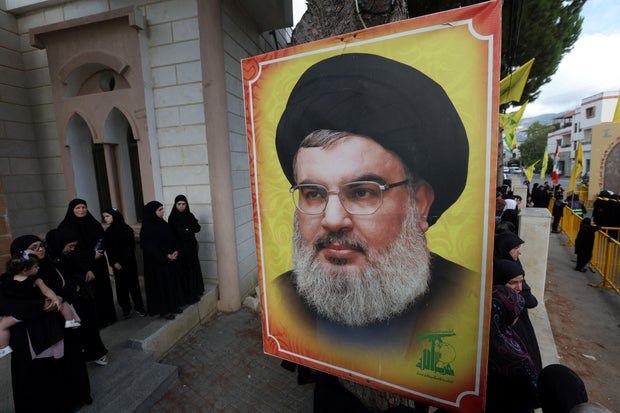Hezbollah leader Hassan Nasrallah, who led the terror group for more than 30 years, was killed in an Israeli airstrike.
Nasrallah, 64, was killed during a massive airstrike on the Iran-backed group’s “central headquarters” in Beirut, Lebanon on Friday, the Israel Defense Forces said in a statement.
Hezbollah confirmed Nasrallah’s death, saying its longtime leader “has joined his fellow martyrs.”
The strike also killed Ali Karki, the commander of Hezbollah’s southern front, and other Hezbollah leaders, the IDF said. The leaders were in a command facility “embedded under a residential building,” the IDF said. An Israeli military official said real-time intelligence on an operational opportunity allowed them to carry out the strike.
The afternoon strike was part of a series of large explosions targeting leaders of the militant group, which has been firing rockets and drones across Lebanon’s southern border into Israel for nearly a year amid the war between Israel and Hamas.
Aziz Taher / REUTERS
Hassan Nasrallah’s background
Nasrallah was born in Beirut in 1960, the ninth of 10 children in a Shia family. The city was then known as the “Paris of the Middle East,” but when Lebanon’s civil war broke out in 1975, the city deteriorated into disaster.
During that time, Nasrallah’s family fled Beirut. He joined a Shia militia called the Amal Movement, which later evolved into Hezbollah, which means “Party of God.” The group has been backed by Iran since its inception, according to Israeli and U.S. officials, with Iran training fighters and sending hundreds of millions of dollars annually.
Nasrallah studied in Iran for a time, then returned to the group and became Hezbollah’s secretary general after Israel assassinated his predecessor, Abbas al-Musawi, in a 1992 helicopter strike.
Hezbollah under Hasrallah’s leadership
Under Nasrallah’s fiery and charismatic leadership, Hezbollah crystallized its threats to destroy Israel and the U.S. presence in Lebanon. Washington declared the organization a terror group in October 1997.
The group’s military wing has been linked to the mass casualty bombings of two U.S. embassy buildings in the 1980s. The bombings killed more than 80 people and wounded hundreds more. Hezbollah has also been linked to airplane hijackings, kidnappings, suicide bombings and espionage around the world.
Hezbollah has also expanded politically, winning elected seats in Lebanon’s parliament over the last three decades, and becoming very public throughout Lebanon.
Nasrallah feared assassination
Nasrallah’s public appearances became rarer, even as the profile of Hezbollah grew. Afraid of assassination, he chose to deliver speeches via video from secret locations.
In his last televised remarks, on September 19, he blamed Israel for an exploding pager and walkie-talkie attack that killed dozens of Hezbollah soldiers and wounded several thousand more. In his final words, he vowed that “retribution will come.”
